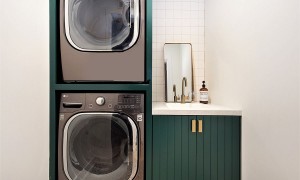When disaster strikes, you’ll be relying on your home emergency kit. Aside from canned foods and water, do you have these five essential items?
Every home has the potential for being in some type of natural disaster. The United States had a total of 49 severe thunderstorms and a total of 90 natural disasters in the year 2019.
Whether flooding, tornado, hurricane, or snowstorm, you want to be ready before disaster strikes. Other than canned food and water, do you have these five items in your home emergency kit?
Home Emergency Kit
When creating a home emergency kit, store all items in a portable, watertight container such as a plastic tub. Depending on the size of your family you may need to have two tubs, one for food and one for non-food items.
The Red Cross recommends keeping enough bottled water and non-perishable food on hand to sustain the members of your household for two weeks. Here are five additional items you want to have in your kit:
1. First Aid Kit
A well-stocked first-aid kit is a must-have for every home, and definitely every emergency kit. Your kit should include the following:
- Facial masks
- Non-Prescription medication such as pain relievers, antacids
- Bandages in assorted sizes
- Sterile dressings in assorted sizes
- Sterile eye pad
- Instant ice pack
- Antiseptic wipes
- Antiseptic cream
- Ace bandage
- Medical tape
- Latex-free disposable gloves
- Scissors
- Tweezers
- Safety Pins
- Digital thermometer
2. Tool Kit
In an emergency, there may be a need for basic household tools, and having a basic toolkit ready will make it easy to find these essential items:
- Wrench
- Pliers
- Screwdriver
- Scissors
- Duct Tape
- Pocket knife
- Hammer
3. Other Essentials
This is a collection of easily forgotten must-have items. When maintaining an emergency kit replace items such as batteries on a regular basis to prevent them from expiring.
- A generator that operates on solar power such as the https://PoweredPortableSolar.com
- Hand-crank can opener
- Flashlight and camping lantern
- Extra batteries
- Cell phone with battery-powered or solar charger
- Radio powered by battery or hand-cranked
- Water purification tablets or unscented household bleach and medicine dropper
- Flares and whistle to signal for help
- Garbage Bags
- Candles
- Waterproof matches
- Notebook and pencils or pens (for noting events)
- Pet food
- Baby formula and baby food
- Diapers and wipes
- Cash – in case card readers are not working
- Fun Items – child’s stuffed animals, a deck of cards, books, family board game
4. Family Documents
The documents that are difficult to replace should be stored in a watertight container. You want these items easy to grab if you need to make an emergency evacuation:
- Life and health insurance policies
- Drivers license or other photo identification
- Banking records
- Social Security card
- Passports
- Birth certificate and/or adoption certificates
- Marriage license
- Divorce records
5. Personal Care Kit
If the emergency status lasts for several days, you will need items to maintain your health and allow you to rest as comfortably as possible.
- 1-2 changes of clothing
- Sleeping bag or blanket and pillow for each person
- Eyeglasses or contacts and supplies
- Prescription Medication
- Moist toilets or baby wipes for cleansing body
- Toilet Tissue
- Feminine hygiene items
- Personal hygiene items such as toothbrush, toothpaste, and deodorant
Always Be Prepared
There Girl Scouts and Boy Scouts operate under the motto of Always Be Prepared and it is a good system to live by when it comes to preparing a home emergency kit. Now that you are stocked and ready to survive the next natural disaster, check out our other blogs for more great ideas.



























